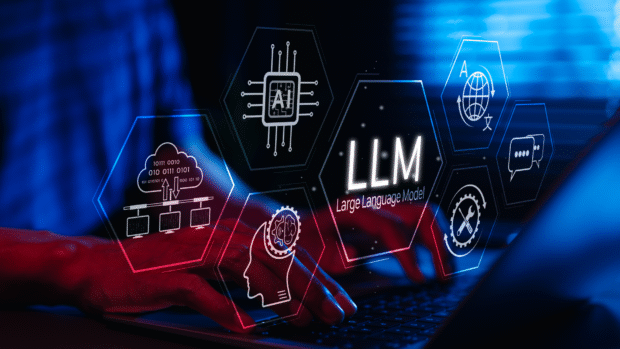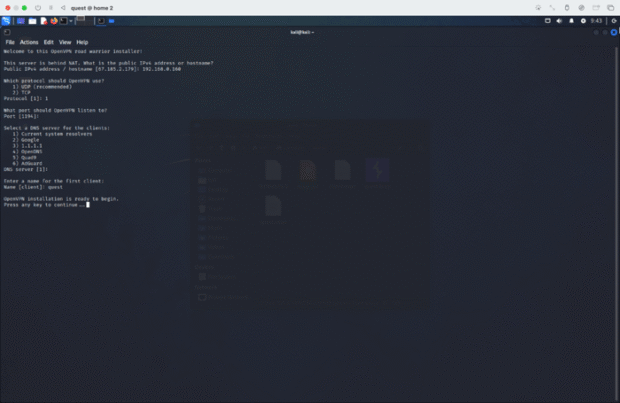
The Original Two-Year Period for Free Emergency SOS Satellite Features on iPhone Has Expired – But Apple Hasn’t Started Charging Yet
Apple introduced the Emergency SOS via satellite feature with the iPhone 14 series, providing users the ability to send emergency messages via satellite, even when there is no cellular signal. This groundbreaking feature was included for free for the first two years after the device’s activation. However, as that two-year period has come to an end, the big question on everyone’s mind is: Will Apple begin charging for this feature, or will it continue to be free?
What is Emergency SOS via Satellite?
This feature was designed to provide a lifeline to users in remote or isolated areas where traditional cellular coverage is unavailable. By connecting to satellite networks, it allows iPhone 14 and newer users to send emergency messages, call for help, and share their location, even without the usual mobile coverage.
It was initially launched as a free service for the first two years of use, starting from the activation of the device.
The Expiration of the Two-Year Free Period
For those who activated their iPhone 14 after its initial release, the free two-year period for Emergency SOS via satellite is now over. Users who were relying on this feature as a safety net may wonder what to expect next.
Apple has not yet started charging users for access to Emergency SOS via satellite. The company has been tight-lipped about future plans regarding pricing. As of now, the feature remains free, leaving many to speculate about whether Apple will make it a paid service or extend the free period further.
What’s Next for Emergency SOS via Satellite?
Here are some potential scenarios:
- Subscription-Based Model: It’s possible Apple could introduce a subscription fee for satellite connectivity, much like they do for other premium services such as iCloud and AppleCare.
- Free for All iPhone Users: Alternatively, Apple may choose to keep this service free for all users, seeing it as a value addition to the iPhone that could help differentiate it from competitors.
- Region-Specific Charges: Another possibility is that Apple may begin charging for this feature in certain regions or countries where satellite infrastructure costs are higher.
Why is Apple Delaying Charges?
There’s speculation that Apple is testing the feature in its early stages and wants to collect more data before deciding on a pricing model. Additionally, with the increasing importance of emergency services, it might be in Apple’s best interest to keep the feature free to enhance the safety perception of their devices, especially with ongoing competition in the smartphone industry.
How to Use Emergency SOS via Satellite
Using the Emergency SOS feature is relatively simple:
- Activate SOS: Press and hold the side button and a volume button until the emergency call slider appears.
- Select Satellite Option: If there’s no cellular signal, the option to connect via satellite will appear.
- Follow Prompts: Users are guided on how to point their phone toward the sky for better satellite connection.
It’s important to note that Emergency SOS via satellite only works in certain countries, and you must have an iPhone 14 or newer.
What Users Are Saying
The satellite SOS feature has received praise for providing peace of mind, particularly for those in outdoor activities like hiking, mountaineering, and camping. Users have highlighted its importance in areas where cellular coverage is limited, reinforcing the need for Apple to continue supporting it, whether free or paid.
How Can You Stay Updated?
To stay informed on any updates to this feature, including whether it will remain free or become a paid service, follow Apple’s official website, sign up for notifications, or keep an eye on the latest tech news through trusted sources like MacRumors or Apple News.
#TrendingNow #InspirationDaily #ExploreMore #LifestyleTips #InTheNews #DigitalAge #Insights #Innovation #BehindTheScenes #WorldView #Digital #forensic
Read more on our more trending special page
About the author
Defend the Airport
[ad_1] Every day, millions of passengers depend on a vast, complex airport ecosystem to get from Point A to Point B. From airline check-ins and baggage handling to air traffic control and terminal operations, the aviation sector is an intricate web of interconnected third-party providers, technologies, and stakeholders. In this high-stakes environment, a cybersecurity breach is not a single point of failure, it’s a ripple effect waiting to happen. Cyber Threats Aren’t Just IT Problems – They’re Operational Crises When people think about airport cybersecurity, they often picture network firewalls at airline headquarters or secure software for booking systems. But the real threat landscape is far broader and far more vulnerable. If a catering supplier is hit with ransomware, the aircraft turnaround slows. If the baggage conveyor system is compromised, luggage piles up, delaying departures. If the security contractor experiences […]
Navpreet Pannu June 4, 2025
Securing LLMs Against Prompt Injection Attacks
[ad_1] Introduction Large Language Models (LLMs) have rapidly become integral to applications, but they come with some very interesting security pitfalls. Chief among these is prompt injection, where cleverly crafted inputs make an LLM bypass its instructions or leak secrets. Prompt injection in fact is so wildly popular that, OWASP now ranks prompt injection as the #1 AI security risk for modern LLM applications as shown in their OWASP GenAI top 10. We’ve provided a higher-level overview about Prompt Injection in our other blog, so in this one we’ll focus on the concept with the technical audience in mind. Here we’ll explore how LLMs can be vulnerable at the architectural level and the sophisticated ways attackers exploit them. We’ll also examine effective defenses, from system prompt design to “sandwich” prompting techniques. We’ll also discuss a few tools that can help […]
Navpreet Pannu May 14, 2025
LLM Prompt Injection – What’s the Business Risk, and What to Do About It
[ad_1] The rise of generative AI offers incredible opportunities for businesses. Large Language Models can automate customer service, generate insightful analytics, and accelerate content creation. But alongside these benefits comes a new category of security risk that business leaders must understand: Prompt Injection Attacks. In simple terms, a prompt injection is when someone feeds an AI model malicious or deceptive input that causes it to behave in an unintended, and often harmful way. This isn’t just a technical glitch, it’s a serious threat that can lead to brand embarrassment, data leaks, or compliance violations if not addressed. As organizations rush to adopt AI capabilities, ensuring the security of those AI systems is now a board-level concern. In this post we’ll provide a high-level overview of prompt injection risks, why they matter to your business, and how Security Innovation’s GenAI Penetration […]
Navpreet Pannu May 9, 2025
Setting Up a Pentesting Environment for the Meta Quest 2
[ad_1] With the advent of commercially available virtual reality headsets, such as the Meta Quest, the integration of virtual and augmented reality into our daily lives feels closer than ever before. As these devices become more common, so too will the need to secure and protect the data collected and stored by them. The intention of this blog post is to establish a baseline security testing environment for Meta Quest 2 applications and is split into three sections: Enabling Developer Mode, Establishing an Intercepting Proxy, and Injecting Frida Gadget. The Quest 2 runs on a modified version of the Android Open Source Project (AOSP) in addition to proprietary software developed by Meta, allowing the adoption of many established Android testing methods. Enabling Developer Mode The first step of setting up a security testing environment on the Quest is to […]
Navpreet Pannu April 28, 2025
Earn the US Cyber Trust Mark and Unlock New IoT Growth Opportunities
[ad_1] As an IoT product manufacturer, building consumer trust in the security of your connected devices is critical for driving sales and staying competitive. Fortunately, the Federal Communications Commission (FCC) has introduced a new program to help - the US Cyber Trust Mark. The Cyber Trust Mark is a new voluntary labeling program that is obtained by demonstrating the cybersecurity of your IoT products. By earning this seal of approval, you can demonstrate to your customers that your devices meet rigorous security standards and can be trusted to protect their personal data and connected home. Retailers like Best Buy and Amazon will be collaborating with the FCC to educate consumers on this new program and increase public demand for the Cyber Trust Mark. But achieving the Cyber Trust Mark isn't a simple process. That's where Security Innovation, a Bureau Veritas […]
Navpreet Pannu April 6, 2025
The Value of OT Penetration Testing
[ad_1] With the increasing cyber threats targeting operational technology (OT) environments, it's more important than ever to proactively assess and strengthen the security of your Industrial Control Systems (ICS). One of the most effective ways to do this is through an OT penetration test. What is an OT Penetration Test? An OT penetration test is a comprehensive security assessment that simulates real-world cyber-attacks against your ICS environment. Experienced security professionals, with deep expertise in both IT and OT systems, will attempt to gain unauthorized access and exploit vulnerabilities within your industrial control networks and devices. The team will provide you with a realistic understanding of your ICS security posture and the potential impact of a successful attack. The Benefits of OT Penetration Testing Uncover Hidden Vulnerabilities: Pen testers will identify vulnerabilities and misconfigurations that may have been overlooked by traditional […]
Navpreet Pannu April 6, 2025
Related
Defend the Airport
[ad_1] Every day, millions of passengers depend on a vast, complex airport ecosystem to get from Point A to Point B. From airline check-ins and baggage handling to air traffic control and terminal operations, the aviation sector is an intricate web of interconnected third-party providers, technologies, and stakeholders. In this high-stakes environment, a cybersecurity breach is not a single point of failure, it’s a ripple effect waiting to happen. Cyber Threats Aren’t Just IT Problems – They’re Operational Crises When people think about airport cybersecurity, they often picture network firewalls at airline headquarters or secure software for booking systems. But the real threat landscape is far broader and far more vulnerable. If a catering supplier is hit with ransomware, the aircraft turnaround slows. If the baggage conveyor system is compromised, luggage piles up, delaying departures. If the security contractor experiences […]
Navpreet Pannu June 4, 2025
Securing LLMs Against Prompt Injection Attacks
[ad_1] Introduction Large Language Models (LLMs) have rapidly become integral to applications, but they come with some very interesting security pitfalls. Chief among these is prompt injection, where cleverly crafted inputs make an LLM bypass its instructions or leak secrets. Prompt injection in fact is so wildly popular that, OWASP now ranks prompt injection as the #1 AI security risk for modern LLM applications as shown in their OWASP GenAI top 10. We’ve provided a higher-level overview about Prompt Injection in our other blog, so in this one we’ll focus on the concept with the technical audience in mind. Here we’ll explore how LLMs can be vulnerable at the architectural level and the sophisticated ways attackers exploit them. We’ll also examine effective defenses, from system prompt design to “sandwich” prompting techniques. We’ll also discuss a few tools that can help […]
Navpreet Pannu May 14, 2025
LLM Prompt Injection – What’s the Business Risk, and What to Do About It
[ad_1] The rise of generative AI offers incredible opportunities for businesses. Large Language Models can automate customer service, generate insightful analytics, and accelerate content creation. But alongside these benefits comes a new category of security risk that business leaders must understand: Prompt Injection Attacks. In simple terms, a prompt injection is when someone feeds an AI model malicious or deceptive input that causes it to behave in an unintended, and often harmful way. This isn’t just a technical glitch, it’s a serious threat that can lead to brand embarrassment, data leaks, or compliance violations if not addressed. As organizations rush to adopt AI capabilities, ensuring the security of those AI systems is now a board-level concern. In this post we’ll provide a high-level overview of prompt injection risks, why they matter to your business, and how Security Innovation’s GenAI Penetration […]
Navpreet Pannu May 9, 2025
Setting Up a Pentesting Environment for the Meta Quest 2
[ad_1] With the advent of commercially available virtual reality headsets, such as the Meta Quest, the integration of virtual and augmented reality into our daily lives feels closer than ever before. As these devices become more common, so too will the need to secure and protect the data collected and stored by them. The intention of this blog post is to establish a baseline security testing environment for Meta Quest 2 applications and is split into three sections: Enabling Developer Mode, Establishing an Intercepting Proxy, and Injecting Frida Gadget. The Quest 2 runs on a modified version of the Android Open Source Project (AOSP) in addition to proprietary software developed by Meta, allowing the adoption of many established Android testing methods. Enabling Developer Mode The first step of setting up a security testing environment on the Quest is to […]
Navpreet Pannu April 28, 2025
Kiren Rijiju: Why Earth Sciences minister Rijiju is upset with this European IT company |
[ad_1] Earth Sciences Minister Kiren Rijiju is reportedly upset with the French IT company Atos. Reason is said to be delay in the delivery of two supercomputers by the French company to Indian weather forecasting institutes. According to a report in news agency PTI, the Earth Sciences Ministry had ordered two supercomputers worth $100 million from French firm Eviden, of the Atos Group, last year to enhance the computing capabilities of its institutions -- the National Centre for Medium Range Weather Forecasting (NCMRWF) and the Indian Institute of Tropical Meteorology (IITM)."I am more upset because the target we set was December. The Union Cabinet had already approved purchasing the supercomputer. We have only four petaflop capacity. We want to install up to 18 petaflop capacity," Rijiju told PTI in a video interview.He said that the French company ran into some […]
Harshit bharti April 7, 2025
Former Activision boss reportedly wants to buy TikTok
[ad_1] Bobby Kotick, the former head of Activision Blizzard, is reportedly considering buying TikTok, as the app could be banned in the United States. The Wall Street Journal reports that Kotick has talked to ByteDance, the company that owns TikTok, about buying the app, which could cost hundreds of billions of dollars.This comes as US lawmakers introduce a new bill that would make ByteDance sell TikTok within six months or stop it from being available in US app stores.President Joe Biden has said he would approve the bill if it passes in Congress.The Wall Street Journal report adds that Kotick, the head of OpenAI, Sam Altman, discussed teaming up to buy TikTok at a dinner last week. Kotick's interest in TikTok follows a rough end to his 30 years leading Activision Blizzard, which Microsoft acquired last year. The company faced […]
Harshit bharti April 7, 2025








